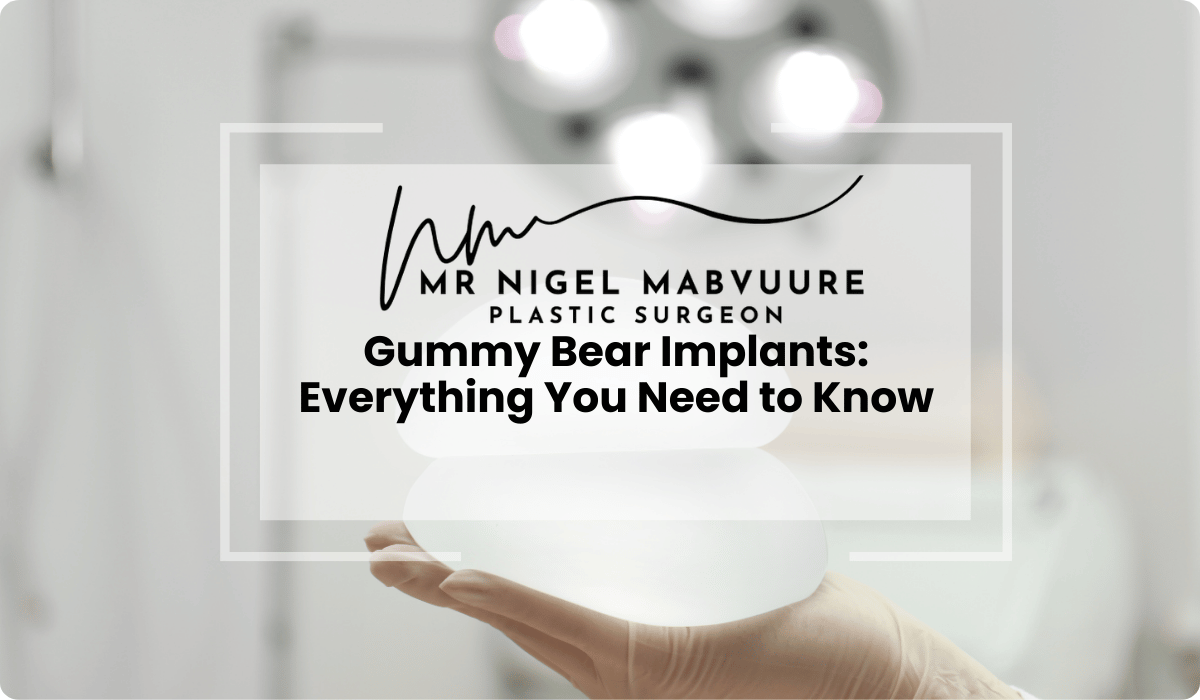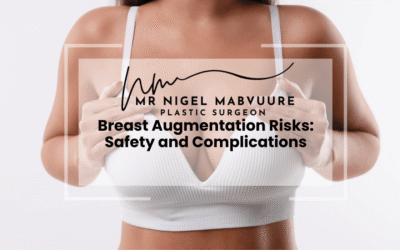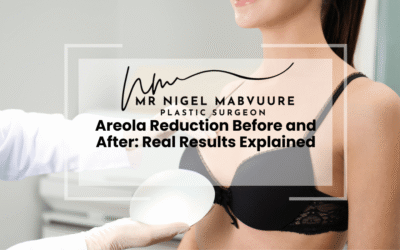Essential Insights: What You Need to Know About Gummy Bear Implants
- Advanced technology: Gummy bear implants feature highly cohesive silicone gel that maintains shape even if the shell is compromised, offering enhanced safety over traditional implants.
- Natural aesthetics: Their teardrop shape mimics natural breast contours, providing more fullness at the bottom with a gentle slope at the top for more natural-looking results.
- Superior durability: While typically warranted for 10 years, these implants often last significantly longer with lower rates of complications like capsular contracture.
- Customized dimensions: Available in various heights, widths, and projections to match individual anatomy for optimal results.
- Investment consideration: Though £1,000-£2,000 more expensive than traditional options, their longevity and aesthetic benefits may justify the higher cost for many patients.
- Recovery timeline: Most patients return to light activities within 7-10 days, with full recovery and final results visible after several months as implants settle into position.
Table of Contents
- What Are Gummy Bear Implants? Understanding the Basics
- The Science Behind Highly Cohesive Silicone Gel Implants
- Comparing Gummy Bear vs Traditional Implants: Key Differences
- Benefits of Form-Stable Implants for Natural Breast Shape
- How Long Do Gummy Bear Implants Last? Durability Explained
- Finding Your Ideal Size: Selecting the Right Implant Dimensions
- Recovery and Aftercare: What to Expect After Surgery
- Are Gummy Bear Implants Worth the Investment?
What Are Gummy Bear Implants? Understanding the Basics
Gummy bear implants, also known as form-stable or cohesive gel implants, represent the latest generation of silicone breast implants available to patients seeking breast augmentation. These implants earned their playful nickname due to their remarkable consistency—when cut in half, they maintain their shape, similar to gummy bear sweets.
Unlike traditional silicone implants, gummy bear implants contain a highly cohesive silicone gel that holds its form even when the implant shell is compromised. This revolutionary design offers enhanced safety and aesthetic benefits that many patients find appealing. The implants typically feature a teardrop or anatomical shape that mimics the natural breast contour, with more fullness at the bottom and a gentle slope towards the top.
Introduced to the UK market after extensive clinical trials, these structured implants have quickly gained popularity among both surgeons and patients. Their anatomical design makes them particularly suitable for women seeking a more natural-looking enhancement or those undergoing reconstructive surgery. The semi-solid consistency of the silicone gel provides a balance between natural feel and shape retention that previous generations of implants couldn’t achieve.
The Science Behind Highly Cohesive Silicone Gel Implants
The technological advancement that makes gummy bear implants unique lies in their highly cohesive silicone gel composition. This specialised formulation represents the culmination of decades of silicone implant research and development. The molecular structure of this fifth-generation silicone gel features stronger cross-linking between the silicone molecules, creating a semi-solid substance that maintains its shape while remaining soft to the touch.
This enhanced cohesivity provides several scientific advantages. The gel molecules bond together so effectively that even if the outer shell is compromised, the silicone remains intact rather than leaking into surrounding tissue. This characteristic significantly reduces complications associated with earlier silicone implants, such as silicone migration and capsular contracture.
The outer shell of gummy bear implants also features technological improvements. Manufactured with a textured surface in most cases, this design helps the implant adhere to surrounding tissue, reducing the risk of rotation—a crucial factor for anatomically shaped implants. The shell’s multi-layered barrier technology further minimises gel bleed, the slow diffusion of silicone molecules through an intact shell.
Laboratory testing demonstrates that highly cohesive gel implants withstand significantly greater force before deformation compared to traditional silicone implants, contributing to their longevity and shape retention properties. This scientific foundation explains why many breast augmentation specialists now recommend these advanced implants for patients seeking long-term, natural-looking results.
Comparing Gummy Bear vs Traditional Implants: Key Differences
When evaluating breast implant options, understanding the distinctions between gummy bear implants and traditional alternatives is essential for making an informed decision. The most fundamental difference lies in the consistency of the filling material. Traditional silicone implants contain a less cohesive gel that flows more freely within the shell, while gummy bear implants feature the highly cohesive gel that maintains its shape.
Shape represents another significant distinction. Traditional implants are typically round, creating equal fullness throughout the breast. In contrast, anatomical implants (gummy bears) feature a teardrop shape that mimics natural breast contours. This shape difference affects the final aesthetic outcome—round implants generally create more upper pole fullness, while teardrop implants produce a more subtle, sloped appearance.
The implant shell also differs between types. Gummy bear implants almost exclusively feature textured surfaces to prevent rotation, whereas traditional implants may be smooth or textured. This textured surface interacts differently with surrounding tissue, potentially reducing certain complications but introducing others.
Regarding performance, form-stable implants demonstrate superior shape retention over time. Traditional implants may gradually settle and change shape, particularly in upright positions. The highly cohesive gel in gummy bear implants resists the effects of gravity more effectively, maintaining the desired breast shape for longer periods.
Finally, the risk profiles differ. While all implants carry certain risks, the cohesive nature of gummy bear implants virtually eliminates concerns about silicone leakage. However, their firmer consistency may feel less natural to some patients, and their anatomical shape means proper surgical placement is even more critical.
Benefits of Form-Stable Implants for Natural Breast Shape
Form-stable implants offer several distinct advantages for patients seeking the most natural breast appearance possible. The anatomical teardrop shape of these implants closely replicates the natural breast contour, with more projection at the bottom and a gentle slope at the top. This design creates results that appear less augmented and more in harmony with the patient’s body proportions.
The highly cohesive gel provides optimal shape retention, maintaining the desired breast profile even during various activities and positions. Unlike less cohesive implants that may ripple or fold in certain positions, gummy bear implants retain their structural integrity, reducing visible or palpable implant edges—particularly beneficial for women with minimal natural breast tissue.
These structured implants also offer improved projection capabilities. The stable nature of the cohesive gel allows for more precise control over the forward projection of the breast, creating definition that can be particularly beneficial for patients with breast ptosis (sagging) or those undergoing reconstructive procedures.
Another significant benefit is the reduced risk of rippling and wrinkling. The firm consistency of the gel fills the implant shell more completely than traditional options, minimising the appearance of surface irregularities that might be visible through the skin. This characteristic is especially valuable for slender patients with limited natural breast tissue coverage.
Finally, form-stable implants provide surgeons with more precise control over the final breast shape. The predictable behaviour of these implants allows for more accurate pre-surgical planning and consistent results, giving patients greater confidence in achieving their desired outcome.
How Long Do Gummy Bear Implants Last? Durability Explained
Gummy bear implants are renowned for their exceptional durability compared to previous generations of breast implants. While no implant can be guaranteed to last a lifetime, clinical studies suggest that these highly cohesive gel implants maintain their structural integrity for significantly longer periods. Manufacturers typically warranty their implants for 10 years, but many patients experience considerably longer lifespans without complications.
The enhanced durability stems from several key factors. First, the cross-linked silicone molecules in the cohesive gel resist degradation over time. Second, the thicker, more robust outer shell demonstrates greater resistance to wear and potential rupture. Third, the form-stable nature of the gel means that even if the shell is compromised, the gel maintains its shape rather than leaking, often making ruptures asymptomatic and less urgent to address.
Long-term clinical studies tracking patients with gummy bear implants show lower rates of capsular contracture—the abnormal hardening of scar tissue around the implant—which is a common reason for implant replacement. The textured surface of most anatomical implants appears to disrupt the formation of organised scar tissue that leads to contracture.
It’s important to note that while these implants demonstrate excellent longevity, regular monitoring remains essential. The NHS and regulatory bodies recommend MRI scans every few years to check implant integrity, as ruptures may not be immediately apparent due to the cohesive nature of the gel. Most surgeons advise patients that they may eventually need replacement, but the timeframe is often significantly extended compared to earlier implant types.
Finding Your Ideal Size: Selecting the Right Implant Dimensions
Selecting the appropriate dimensions for gummy bear implants requires careful consideration of multiple factors beyond simply choosing a cup size. Unlike traditional implants, anatomical implants are available in a complex matrix of heights, widths, and projections to achieve the most natural-looking results for each patient’s unique anatomy.
The process begins with a thorough assessment of your chest wall dimensions. The base width of your natural breast creates the foundation for implant selection, as choosing an implant that matches this measurement helps ensure natural-looking results. Your surgeon will carefully measure this width along with other parameters such as breast height, skin elasticity, and tissue thickness.
Projection (how far the implant extends forward from the chest wall) represents another crucial dimension. Gummy bear implants typically offer low, moderate, and high projection options. The ideal projection depends on your desired outcome, existing breast tissue, and body frame. Slender patients with minimal natural tissue often benefit from lower projection options to maintain proportion, while those seeking more dramatic results might consider higher projection variants.
Height selection affects how the implant distributes volume across the chest. Taller implants provide more upper pole fullness and may be suitable for patients with longer torsos, while shorter implants concentrate volume in a more compact area. Your surgeon will recommend the height that best complements your natural breast dimensions and aesthetic goals.
Many clinics now offer 3D imaging technology that allows you to visualise potential results with different implant dimensions. This valuable tool helps bridge the communication gap between your conceptual goals and the surgical reality, ensuring your expectations align with achievable outcomes.
Recovery and Aftercare: What to Expect After Surgery
Recovery following gummy bear implant surgery follows a predictable timeline, though individual experiences may vary. Immediately after surgery, patients typically experience moderate discomfort, swelling, and tightness in the chest area. Most surgeons prescribe pain medication for the first few days, after which over-the-counter analgesics usually suffice for pain management.
The first week represents the most intensive recovery period. Patients should arrange for assistance during this time as reaching, lifting, and certain movements will be restricted. Special post-surgical bras or compression garments must be worn continuously to support the new implants and minimise swelling. Most patients can return to light, non-strenuous work after 7-10 days, though this varies based on individual healing and job requirements.
During weeks two through four, discomfort gradually subsides, though swelling and tightness may persist. The implants initially sit higher on the chest and feel firmer than their final position—a phenomenon called “dropping and fluffing” as the implants gradually settle into their permanent position. Patients can typically resume light exercise after two weeks, though strenuous upper body workouts should be avoided for at least six weeks.
Proper aftercare is crucial for optimal results. Follow all surgeon-provided instructions regarding wound care, medication, and activity restrictions. Attend all scheduled follow-up appointments, which typically occur at one week, one month, three months, and one year post-surgery. These visits allow your surgeon to monitor healing and address any concerns.
Long-term care includes regular self-examinations and scheduled imaging as recommended by your surgeon. Because gummy bear implants maintain their shape even if ruptured, MRI scans are particularly important for detecting any silent ruptures that might otherwise go unnoticed.
Are Gummy Bear Implants Worth the Investment?
When considering the value proposition of gummy bear implants, patients must weigh several factors against the typically higher cost of these advanced devices. In the UK, cohesive gel implants generally command a premium of £1,000-£2,000 above traditional silicone options, with total procedure costs ranging from £5,500 to £7,500 depending on surgeon expertise and geographical location.
The primary value driver for many patients is the superior aesthetic outcome. The anatomical shape and form-stable properties create results that more closely mimic natural breast tissue, with reduced risk of visible rippling or unnatural movement. For patients prioritising the most natural-looking enhancement possible, this aesthetic advantage often justifies the additional investment.
Longevity represents another significant consideration. While no implant lasts forever, the enhanced durability of gummy bear implants may translate to fewer revision surgeries over a lifetime. When amortised over the extended lifespan of these devices, the higher initial cost often becomes more economically favourable compared to less expensive options that might require earlier replacement.
Safety considerations also factor into the value equation. The cohesive nature of the gel virtually eliminates concerns about silicone migration in case of rupture, providing peace of mind that many patients find invaluable. Lower rates of certain complications, particularly capsular contracture, may reduce the likelihood of costly revision procedures.
Ultimately, determining whether gummy bear implants are “worth it” remains a highly personal decision based on individual priorities, aesthetic goals, and financial circumstances. Many patients report high satisfaction rates and consider the premium cost a worthwhile investment in their appearance, confidence, and long-term outcomes. A thorough consultation with a qualified plastic surgeon can help clarify whether these advanced implants align with your specific needs and expectations.
Frequently Asked Questions
Are gummy bear implants safer than traditional silicone implants?
Gummy bear implants offer enhanced safety features compared to traditional silicone implants. Their highly cohesive gel maintains shape even if the shell ruptures, preventing silicone migration into surrounding tissues. Clinical studies show lower rates of capsular contracture and rupture with these form-stable implants. However, all implants carry some risks, and regular monitoring through MRI scans is still recommended regardless of implant type.
Do gummy bear implants feel natural to the touch?
Gummy bear implants provide a relatively natural feel, though they are slightly firmer than traditional silicone implants. The cohesive gel mimics natural breast tissue while maintaining shape stability. Most patients report satisfaction with the feel, particularly when the implants are placed beneath the chest muscle and when adequate natural breast tissue exists for coverage. The balance between natural feel and shape retention is considered one of their primary advantages.
Can gummy bear implants rotate after placement?
Rotation is a potential concern with anatomically shaped implants like gummy bears, as their teardrop shape would create an unnatural appearance if rotated. To prevent this, most gummy bear implants feature textured surfaces that promote tissue adherence and reduce movement. Proper surgical technique with precise pocket creation is also essential. While rotation is possible, it’s relatively uncommon when implants are correctly selected and placed by an experienced surgeon.
What is the recovery time difference between gummy bear and traditional implants?
Recovery timelines are generally similar between gummy bear and traditional implants. Most patients return to light activities within 7-10 days and resume normal activities by 4-6 weeks. However, gummy bear implants may feel firmer initially and take slightly longer to “drop and fluff” into their final position—typically 3-6 months versus 1-3 months for traditional implants. The textured surface of most gummy bear implants may also create a slightly different healing experience.
Are gummy bear implants more expensive than other types?
Yes, gummy bear implants typically cost £1,000-£2,000 more than traditional silicone implants in the UK. The total procedure cost ranges from £5,500-£7,500 depending on surgeon expertise and location. This premium reflects their advanced technology, enhanced durability, and specialized manufacturing process. Many patients consider this additional cost justified by the superior aesthetic results and potential long-term benefits, including reduced rates of certain complications and longer implant lifespan.
Can I breastfeed with gummy bear implants?
Most women can successfully breastfeed with gummy bear implants. The procedure typically doesn’t interfere with milk ducts or glandular tissue when performed correctly, especially with inframammary (breast fold) incisions. However, any breast surgery carries some risk of affecting sensation or function. Discuss your future breastfeeding plans with your surgeon, as this may influence the surgical approach. Studies show no evidence of silicone transfer to breast milk from modern implants, including gummy bear varieties.




